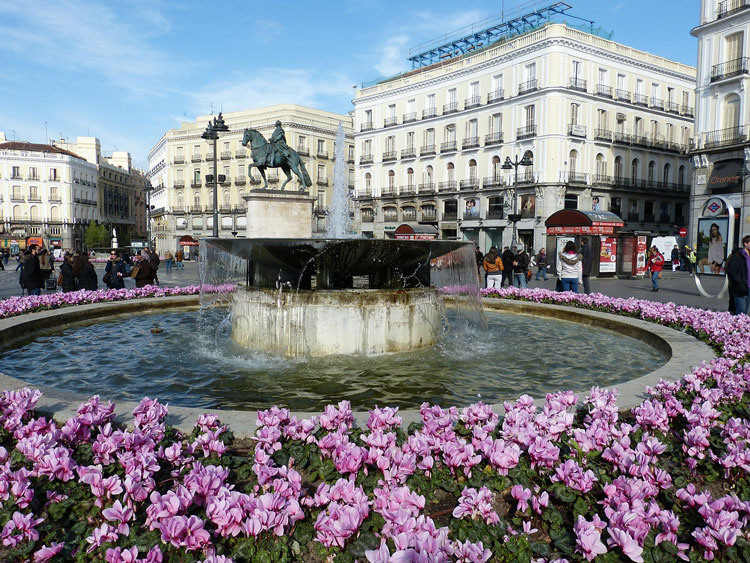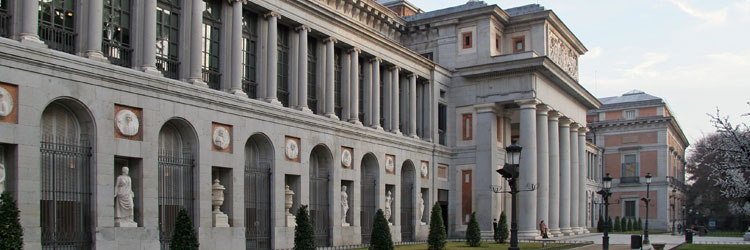
Recent news of
Madrid is a city that will welcome you with its warmth, light, and the many secrets to be discovered by strolling through its streets. You can find culture, gastronomy, sports, and above all you can enjoy its perfect blend of the old and the new.
When Felipe chose Madrid as the capital in 1561, there was a small Castilian population of barely 20,000 inhabitants. However, in the following years it became the centre of a vast empire. Behind the Arab fortress narrow streets sprang up with medieval churches and by the end of the century the population had tripled.
In the 16th century, in the Madrid of the Habsburgs monasteries were founded and churches and palaces were built. In the 17th century the Plaza Mayor square was constructed and the Puerta del Sol became the geographical centre of Spain.

To get to know Madrid, start off in the centre. Puerta del Sol, one of the liveliest areas of Madrid, with its shops and cafes, is a good point of departure. From there you can reach calle Preciados, Spain’s shopping street par excellence, and the Plaza Mayor. This arcaded square is one of the legacies of the Habsburg Dynasty and the most iconic architectural landmark in Madrid. Near the Plaza Mayor don’t miss the San Miguel Market - one of the liveliest markets for tourists in Madrid, where you can eat and buy all kinds of delicatessen.
In this area, going down towards the Manzanares river, you can also find the Royal Palace and the Almudena Cathedral, both of which you should visit to really get to know Madrid.

Art in Madrid takes the shape of a triangle, formed by Madrid’s three most internationally renowned museums, the Prado, the Thyssen-Bornemisza and the Reina Sofía. In the Prado Museum you can find masterpieces by Goya, Velázquez, Tiziano, El Greco, El Bosco, and take a real journey through the history of art. In the Reina Sofía Museum you can view the most avant-garde art works, stretching from the end of the 19th century to the present day. Lastly, the Thyssen-Bornemisza Museum offers you a tour through the history of European painting, from its beginnings in the 13th century up to the end of the 20th century.
These two adjacent districts are the most characteristic of Madrid. La Latina is on the southern side of the city from Puerta de Moros square and stretches across the streets where the El Rastro flea market is set up as far as the Lavapiés district. In this area, starting from somewhere like Plaza de la Paja square, you should just wander through the streets and trying some of the tapas in the nearby bars to get a taste of the real Madrid.
The Rastro flea market in Madrid dates back to the Middle Ages and stretches from the Plaza de Cascorro to the Manzanares river. Its main thoroughfare is Ribera de Curtidores where if you browse in the stalls you will find all sorts of articles, from World War II helmets, antique mirrors, furniture, shoes, clothes, plugs to books. It’s a place to search, find and haggle.
The Lavapiés district is one of the most alternative in Madrid. On Sundays you can dance salsa and eat in the San Fernando market. Alternatively, visit a temporary exhibition at La Tabacalera, the old tobacco factory on calle Embajadores, or relax on a terrace on calle Argumosa.
The gay pride festival in the Chueca district is world-famous and fills Madrid with colour and animation every year. In Chueca elderly people who have lived here all their lives live side by side with all kinds of businesses targeted at the gay population as well as more general trade. The centre of the district is Chueca square, a very popular meeting point. The area has been remodelled and rehabilitated, as part of which the market of San Antón is a highlight, redeveloped as a leisure area with restaurants and terraces.
The Retiro Park is the authentic lung of Madrid, and next to it is the up-market district of Salamanca. In this district you can find the top international stores and the most exclusive specialist shops (jewellers, fur shops, tailors, decorators, florists…). The area is also home to some of the city’s best restaurants and hotels, as well as major auction houses and antique dealers.
Madrid is a city of contrasts with very varied things to see and do. To get a flavour of its real essence, pick a starting point, and see where your feet take you.
The BARNES Newsletter!
Our luxury real estate news and best selection
Are you interested in...?